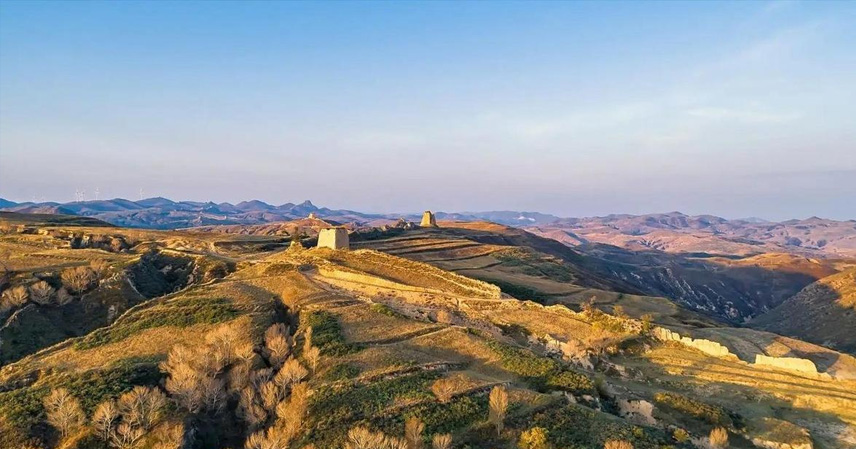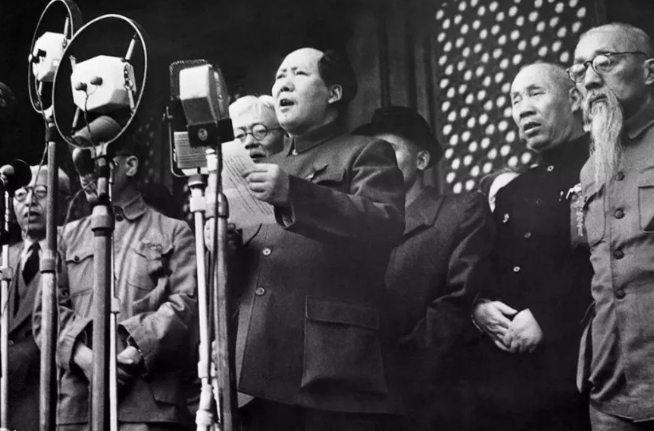Shanxi is known for its rugged mountains, scarce farmland, and extreme climate, especially in its northern borderlands where winter chills can “freeze your ears off.” Sha Hukou, tucked in Youyu County, Shuozhou City, at the Shanxi-Inner Mongolia border, epitomizes this. At 1,230 meters above sea level, its continental climate brings endless winters, with nighttime lows plunging to -19°C and daytime highs barely reaching -1°C. Harsh winds and yellow dust dominate. Locals once relied on thick cotton coats and heated kang beds to survive. Calling it Shanxi’s coldest place is no exaggeration.
Sha Hukou’s history stretches back millennia. In the Spring and Autumn period, it was Canhe Pass, a military corridor where Central Plains states clashed with northern nomadic tribes. By the Sui and Tang dynasties, it became Bailang Pass, a key defensive outpost. In the Song and Yuan eras, it was renamed Yalang Pass, retaining its defensive role. During the Ming Dynasty, it guarded the Great Wall’s north, dubbed Sha Hu Kou (“Kill Hu Pass”) to block Mongol invasions. In the Qing Dynasty, Emperor Kangxi renamed it Sha Hukou (“Kill Tiger Pass”) to ease tensions with northern minorities, giving it a neutral tone. Flanked by Tangzi Mountain to the east and Dabao Mountain to the west, with the Cangtou River carving a north-south passage, its strategic position was unmatched.
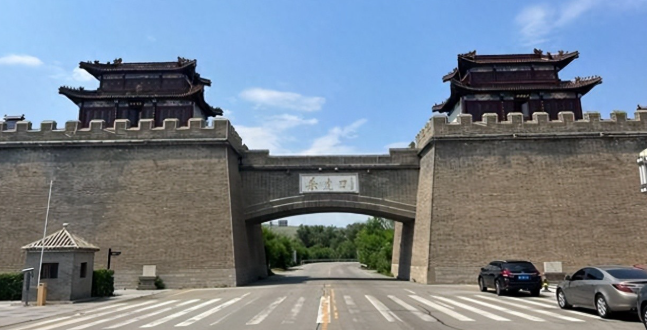
Beyond warfare, Sha Hukou evolved into a commercial hub. During the Ming and Qing dynasties, Shanxi merchants (Jinshang) rose to prominence, using it as a gateway for northern trade. From the Ming, they traded goods like tea, cloth, and porcelain beyond the Great Wall, exchanging them for furs, livestock, and herbs. Sha Hukou linked to Inner Mongolia, Xinjiang, and even Russia, becoming a bustling trade hub. At its peak, it housed nearly 50,000 people, with shops lining the streets—a true small city. The Qing government established a tax office here, initially the “Eight Great Offices,” later the Sha Hukou Tax Supervision Department, one of China’s 39 major customs posts and Shanxi’s only one. Its jurisdiction spanned 200 km, from Xinpingbao in Tianzhen County to Shenmu in Shaanxi, and north to Baotou and Hohhot, fueling the local economy.
Among Shanxi merchants, Dashengkui was a standout. Founded by Wang Xiangqing, Zhang Jie, and Shi Daxue from Qixian, with Wang as the first head, it began humbly. Born in 1714 in Wujiapu, Taigu, Wang started as a laborer before trading small goods at Sha Hukou. In 1736, Dashengkui launched, focusing on tea and tobacco for Mongol markets. It grew massive, with 20,000 camels and branches in Guihua and Kyakhta, tapping into Sino-Russian trade. Wang’s strict management and emphasis on trust scaled the firm to thousands of employees. He lived to 92, passing in 1806, and Dashengkui thrived long after.
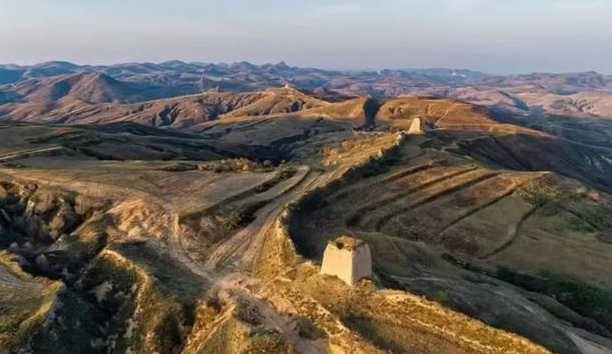
Sha Hukou’s prosperity hinged on trade and merchants, but from the mid-Qing, challenges mounted. Shanxi faced famines and crop failures, straining its population. From Kangxi’s reign, mass migrations—known as “Zou Xikou” (Walking the West Pass)—saw Shanxi residents head north through Sha Hukou or Zhangjiakou for survival. Sha Hukou became the “West Pass,” with thousands crossing to Inner Mongolia’s west. This eased population pressure but drained local labor and services. Trade dwindled, tax revenue fell, and wars, geopolitical shifts, and global instability hit hard. By the late Qing and early Republic, border trade collapsed, and Sha Hukou faded.
In 1929, the customs office closed, relocating to Fengzhen, Inner Mongolia, gutting the town’s economic core. Residents left, and Sha Hukou became a ghost town, now just crumbling houses, yellow earth, and wind. Its ruins echo Ming-Qing history, a testament to China’s border trade rise and fall. From a military pass to a trade hub to desolation, its story is poignant—commerce thrives in stability, scatters in chaos.
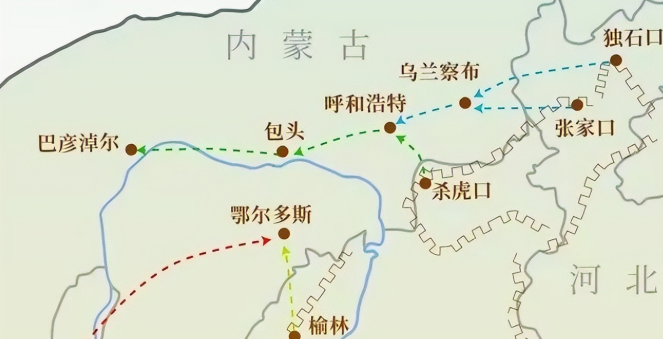
The “Zou Xikou” Migration
During the Qing’s Kangxi-to-Qianlong era, Shanxi’s population outstripped its land. Droughts and floods slashed harvests, pushing people to migrate. Men often went first, farming or trading in Inner Mongolia before bringing families. Sha Hukou saw countless pass through, spreading Shanxi’s culture and skills but hollowing out its own workforce. Shops closed, markets shrank, and tax revenue—tied to passing goods—plummeted, dooming the customs office.
The Jinshang Model
Shanxi merchants thrived on trust, loyalty, and strict management. Dashengkui’s shareholder system and profit-sharing motivated workers. From humble beginnings, Wang Xiangqing and partners built a cross-border empire through diligence and vision. But by the late Qing, foreign competition, railways replacing camel caravans, and revolutionary wars crippled logistics. Most Jinshang firms, including Dashengkui, folded by 1951, mirroring Sha Hukou’s decline.
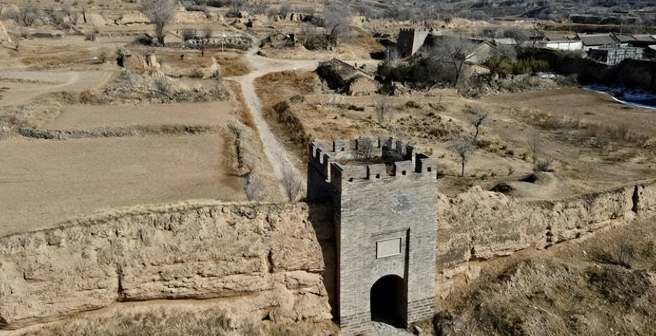
Today’s Sha Hukou
Now a quiet tourist site, Sha Hukou draws few visitors. The government restored some relics and built a museum, but the town remains empty. Once home to 50,000, it fell when its economic lifeline—trade—vanished. History shows places rise and fall on external forces; Sha Hukou lived on commerce and died without it. It’s a grounded lesson: economies are the backbone, and without them, towns collapse.
Sha Hukou’s tale speaks of impermanence. Over 2,000 years, it went from pass to thriving town to ghost city, shaped by policy, climate, and trade. Shanxi’s coldest place isn’t just frigid in temperature—its fate is chilling too. Yet its legacy—Jinshang’s diligence and trust, and Zou Xikou’s migration—offers lessons for today’s entrepreneurs and migrant workers.

